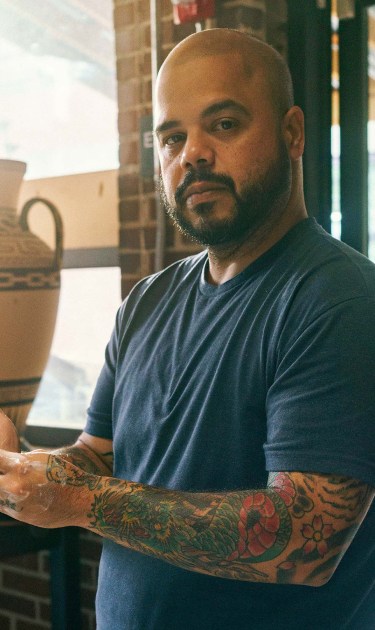Roberto Lugo remembers working as a doorman in a high-rise building, making $4.35 an hour and eating his lunch at the steps of the Philadelphia Museum of Art across the street. He never went inside; in fact, he had never been to a museum growing up. He didn’t know for sure, but he thought at the time that there was nothing of interest in there for someone from a Puerto Rican, low-income neighborhood in Philadelphia like him. Several years later, his art was exhibited in that same museum. “Having work in that museum is really important,” he says. “For people like me who think there’s nothing in a museum for them, they can come across something that they can recognize and feel a connection to [it].”
Born and based in Philadelphia, Roberto Lugo is an artist who has made his name as a ceramist, taking up traditions of classic pottery and updating them to immortalize people and moments that he deems worth remembering, with a heavy socio-political bent. Lugo has accomplished so much thus far; he holds a BFA and an MFA, and his work has been featured at prestigious museums across the states and has won noteworthy awards.
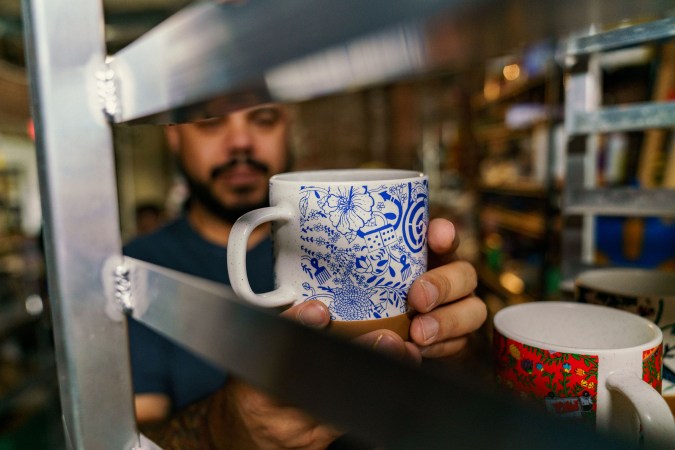
Lugo has contributed to Walmart’s The Nuevolution Project—a celebration of visionary Latine creatives through a capsule collection of exclusive, only-at-Walmart “bold, style-forward” products—making his designs available to a wider audience. This has been an opportunity for his work to connect with people from a similar background. “Being Puerto Rican is complicated,” Lugo says. “That means that you’re part African, part indigenous, you have Spanish roots, Portuguese, and so much is involved. The story I wanted to tell was as a Puerto Rican, not from Puerto Rico, who grew up here and still tries to figure out their identity and that sort of being misunderstood, but then growing to understand the world through that lens.”
For his collaboration—which includes streetwear and home items—he chose imagery involving dominoes, chickens, and pigeons, common in Puerto Rican culture. Having his work available at Walmart, where people can wear and buy his designs, has great significance to the artist. “I never thought in a million years that I would find myself in this place, but now that I am, I want other people to see me,” Lugo says. “Not necessarily see me as an individual but to see my trajectory and see themselves reflected in that it’s possible for them too. I think that’s important.” People can find brightly-colored short-sleeved shirts, patterned coffee mugs, and attractive products for everyday use.
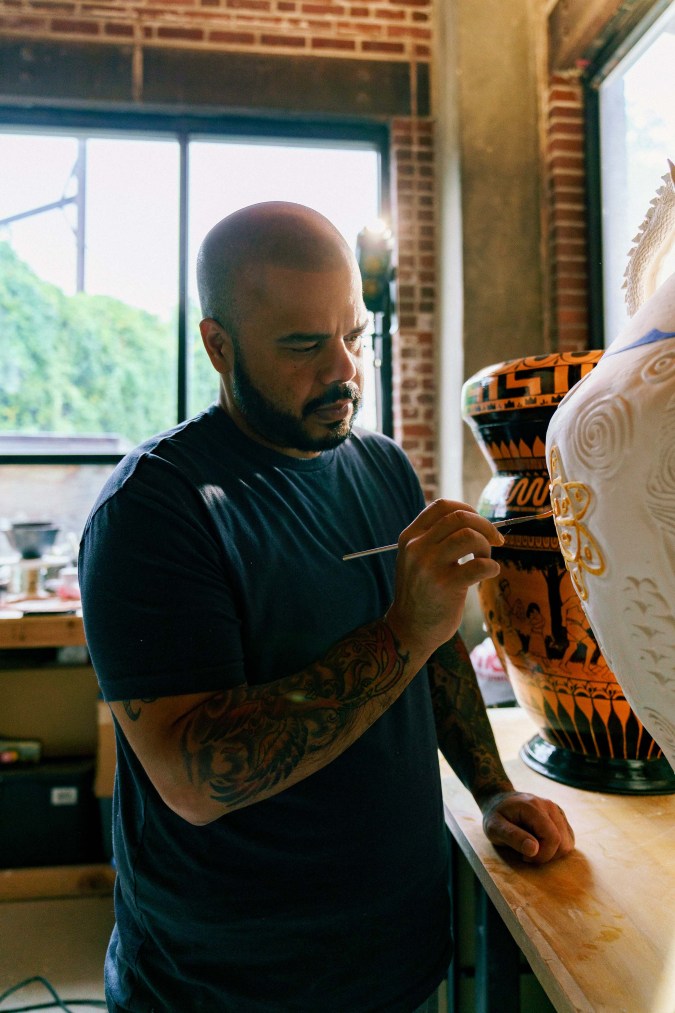
Lugo describes how it “wasn’t an easy life” growing up. He relates how he has had direct experience with trauma and poverty and a lot of people around him going in and out of prison or passing away. Needless to say, not many friends and family had the opportunity to pursue college or careers. Taking up graffiti made him curious about art, but it wasn’t until his mid-20s that he moved to Florida and tried a drawing course at a community college. The teacher of that course was a potter by trade and encouraged Lugo to try it himself. It was then that he received the first positive words about his work. “That encouragement was something that I was hungry for,” he says. “I got really passionate about making art because it felt like it was what I was supposed to do. It felt like I found my thing.”
According to him, his rough upbringing has informed his work more than anything else. “I own where I’m from to where I’m at in many ways,” he says. “That’s my lived experience; it’s really difficult for me to make art about anything else. That’s just my reality and what inspires me to continue to represent the culture that I’m from.”
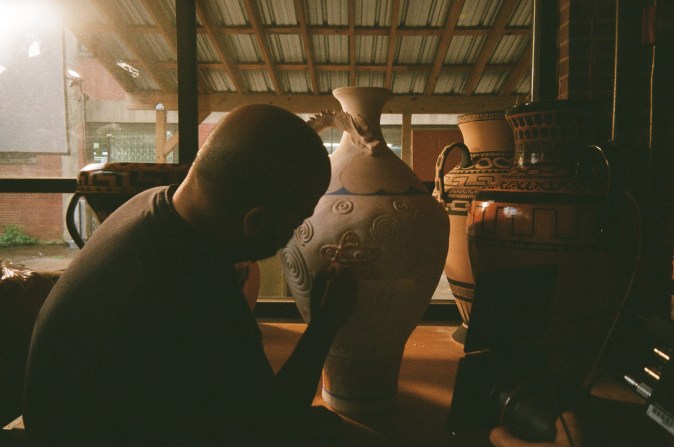
After Florida, Lugo enrolled at the Kansas City Art Institute, a historically important school for ceramic artists in the United States. He described this period as “a complicated experience” and “intense” but one that allowed him to work hard in pursuit of his calling. “This is my chance of life, my one shot to do something special,” Lugo remembers; he didn’t leave the studio much and avoided partying. After graduation, he attended Penn State, which helped him “figure out what it all means and communicate that to others.”
Lugo feels that pottery is a great tradition that connects humanity for thousands of years. “It definitely feels like there’s a lineage in terms of what I’m doing here, and how it was done so long ago,” Lugo says that he’s been studying how Greeks communicated through pottery to communicate his own stories. “If you think about urban cities, Black and brown communities, and impoverished communities, very rarely do people have time to do things like craft, especially craft at a level where you can sell the work or develop a skill and have a career in it. [In that sense], I don’t feel like there’s lineage, but it feels like an opportunity to help create one.”
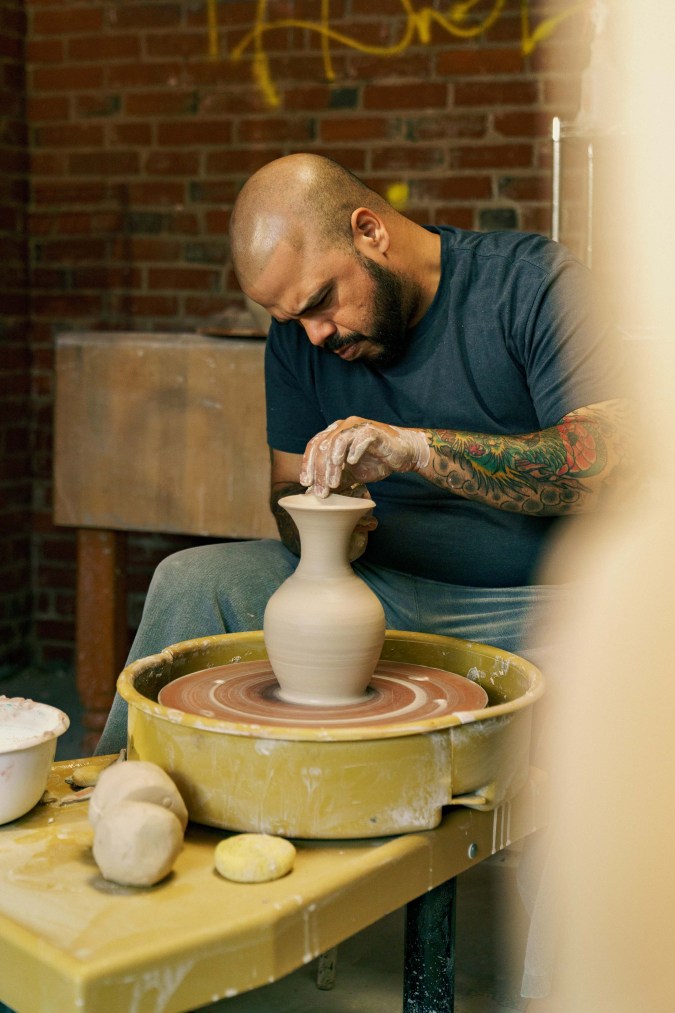
“I’m never working from a blank space,” Lugo says about his inspirations. “I know what it is that I want to communicate with my work.” While he has done portraiture in the past—choosing figures like Cornel West and The Notorious BIG for his work—he’s now attempted narrative and figurative work around his and his family’s everyday, personal experiences. “Giving them a visual representation helps to tell these stories and do it in a way that lasts permanently. Our life is just as valuable as everybody else’s,” he says.
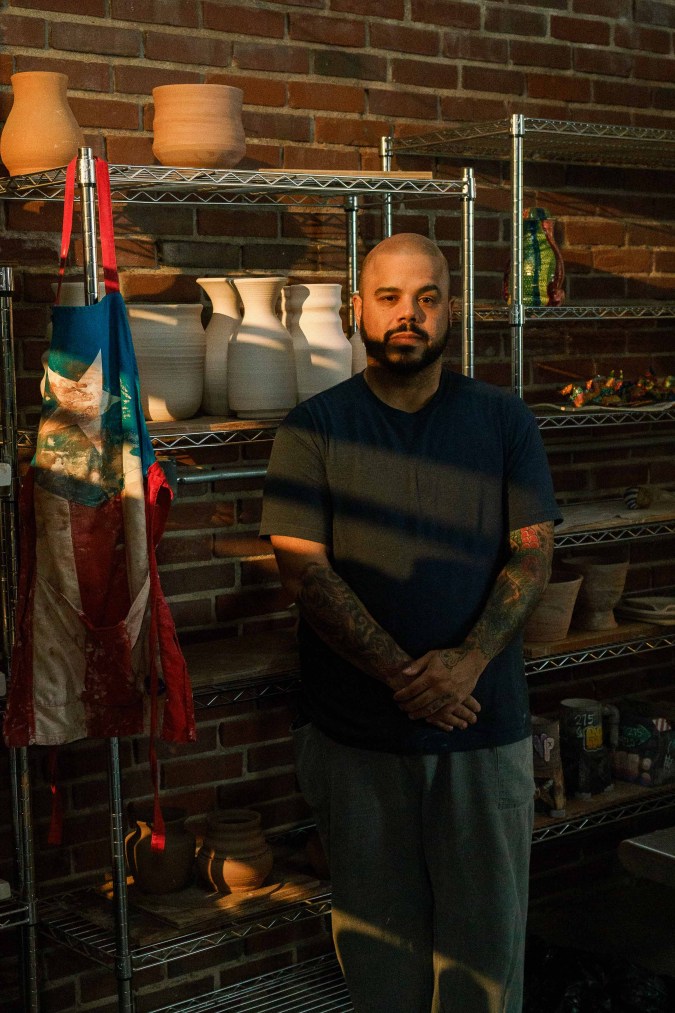
What Lugo considers a direct relationship with some of the people of color in the United States, like the roots of poverty and living in the diaspora, is something he likes to highlight in his work. “I wanted my work to recognize the relationship between Black and Latinos. So that’s why, historically, my work is high portraits of figures like Harriet Tubman, because I feel like the struggle for freedom is something we share.”
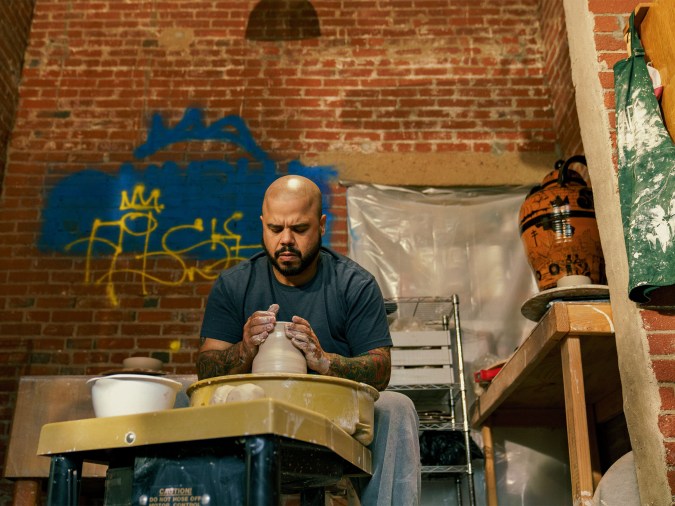
Lugo wants to preserve his culture and surroundings so that future generations can learn the stories of the people he highlights. To him, pottery is a way to communicate for a long time. “Pottery lasts for thousands of years, and things we’re making today will be around in the future. People might not recognize the people I put in my work, but they will recognize the pottery.”
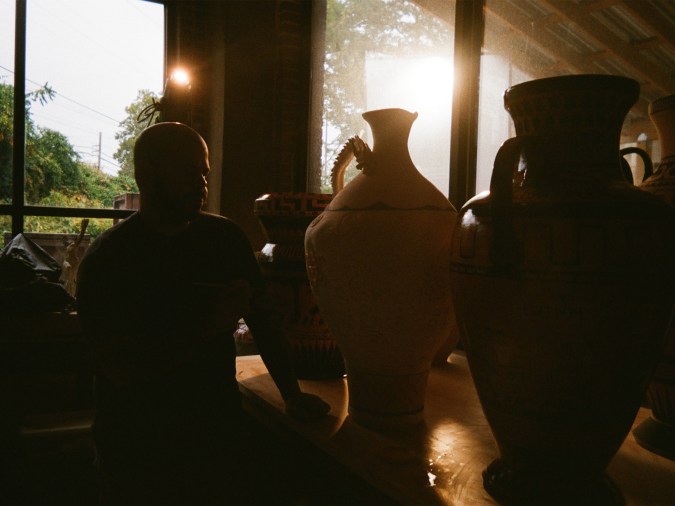
He’s currently working towards an exhibition at Princeton, where his work will be displayed alongside ancient Greek pots.
